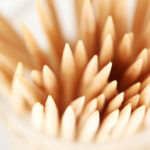Salvadora persica — the World’s Toothbrush Tree
It’s a tree. It’s a toothbrush. It’s a toothbrush tree!
Do you ever see pictures from certain developing nations and wonder how everyone has bright, white and healthy smiles? They can’t possibly be picking up the latest oral health products at the corner Walgreens, so how do they achieve such dazzling smiles? Often the answer is a chew stick from a toothbrush tree.
A chew stick is a twig with one frayed end and the other end pointed like a toothpick. The earliest known chew sticks were found in an Egyptian tomb from 5,000 years ago and mentioned in records from China dating from 1600 BC. Today, in many countries, especially Africa, chew sticks are fashioned from the tree Salvadora persica, commonly known as the toothbrush tree.
Can it really be healthy to use a twig as a toothbrush? When used gently, yes. And when that twig is from the toothbrush tree, most definitely. It not only has a pleasant smell, it contains natural abrasives, antiseptics, and astringents. It is so good for teeth, the World Health Organization promotes Salvadora persica in a regimen of good oral hygiene, wherever it is commonly used. Many studies indicate that its use limits the growth of the bacteria that cause tooth decay, yet outside a few exceptions, industry groups have yet to make use of this natural dental medicine.
Next time you’re in your grocery store or corner drug store and you see all the choices there are to keep teeth healthy, remember those clean bright smiles from developing lands. If they can manage to do that with a twig, imagine how healthy you can keep your teeth with state of the art oral hygiene products and regular visits to your Placerville dentist. Teeth that are cared for regularly will stay strong and healthy for years to come, whether that care comes from a synthetic brush or a specialized tree.



I love miswak.
Miswak is the term commonly applied in the Middle East for the twigs of Salvadora persica.